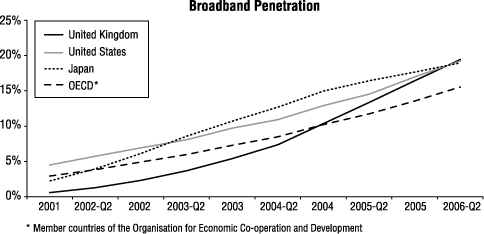| Home | About Us | Resources | Archive | Free Reports | Market Window |
The Most Profitable Thing You Can Do With Your Money in 2007By
Thursday, November 30, 2006
I wrote the most recent issue of my monthly investment advisory with considerable trepidation... For the first time in many months, I did not offer my readers a fail-safe investment. All year long, we’ve bought the best, cheap blue-chip companies in the world... and we’ve done phenomenally well in stocks like Anheuser-Busch (BUD) and Lexmark (LXK). Never in my career has there been a better time to build a long-term portfolio of top-tier companies. If you haven’t done so already, I urge you to get started... But there’s another – potentially four times more profitable – trend developing in the stock market right now. I told my readers about it last month. If everything goes our way, you’ll still have to sell in a year or two. I think it’s worth it because our upside is so large – 150% to 300% in two years’ time. It’s the biggest thing going in the world of technology. Let’s go over some of the details... Over the last 10 years, the speed of the Internet backbone has increased 20,000 times. Meanwhile, the cost-effectiveness of hard drives – digital storage – grew 7,500-fold in roughly the same period. Lagging behind, like the runt of the litter, processing efficiencies have increased only about 60-fold. Most investors still consider Moore’s Law, which describes the pace of efficiency gains in computer chips, to be applicable to other technologies. But, fiber optics has long since taken the lead as the single most important growth technology. Digital storage is a close second. In fact, growth in demand for digital storage is inherently linked to broadband penetration and speed. To understand why, all you’ve got to know is that demand for data storage is a direct function of bandwidth. The more bandwidth you have into and out of your computer, the more storage you’re going to need. As just one simple example of this phenomena, consider the TiVo digital recorder. TiVos and similar digital recording devices have radically altered the dynamics of television. Easier to use than a VCR, this digital recorder allows you to record 60 hours of video and to “pause” live television. That’s probably as much storage as any regular user will ever need. However, as the bandwidth of the cable system grows, more and more high-definition (HD) channels will surely be added. The same 60-hour TiVo drive will only hold about 16 hours of HD programming, which isn’t nearly enough to satisfy most users. Consumers obviously will need much larger amounts of digital storage as HD programming becomes more prevalent. This is admittedly a simple example, but it illustrates that memory demand is inherently a function of network speed. I’ve seen this relationship born out at dozens of large, industrial computing centers, and even by watching the growth of my publishing company’s computer network. But the best example of this demand is found today at Google, which I covered in DailyWealth two weeks ago. In short, Google’s decision to offer huge amounts of free e-mail storage is helping to drive a boom in bandwidth and storage demand. As you can see in the chart below, broadband penetration rates are rapidly approaching a key milestone – the 20% penetration rate. With previous technologies, such as cell phones, VCRs, and fax machines, this amount of penetration triggered changes in marketing and media. Today, we’re seeing the same thing happen with video over the Internet.
It’s obvious that the Internet will continue to grow rapidly in terms of total content. As the amount of content increases – especially video content – people will want faster and faster Internet connections. As these pipes get “fatter,” digital storage demand will grow exponentially. That’s why I’m bullish on digital media storage, routers, and the software that drives it all. You should be too. Good investing, Porter Stansberry Market NotesA NEAR TRIPLE IN THE INTERNET’S TOLL ROAD In addition to the companies that supply software and routers for the new Internet, you can make a fortune in stocks that carry the actual traffic…. stocks like Akamai Technologies (AKAM). Put simply, Akamai is the Internet’s toll road. The company built its own global, private Internet network, so large corporations and governments could deliver content and mission-critical information around the world. Porter was kind enough to tell readers about the stock in the January 19 edition of DailyWealth. He called Akamai one of the most promising hyper-growth stocks he’d ever seen. Hyper-growth is an understatement for what’s happened to Akamai’s share price in 2006. Soaring revenue and earnings growth has sent AKAM stock up 110% since the mention in these pages. Readers of Porter’s Investment Advisory got in earlier… and made even more money. Akamai is up 189% since Porter’s initial recommendation one year ago. The new Internet boom is on. |
Recent Articles
|


